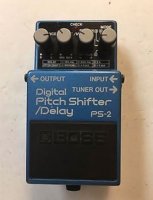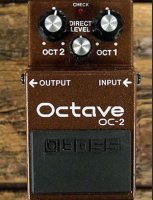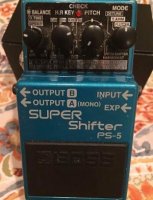
photo by Ross Brubeck
Brooklyn via Boston avant-punks Guerilla Toss are ready to enter the next stage of their career with the release of a new full-length (entitled “GT ULTRA“) on DFA Records. The album steps up the production values by several notches, broadening the act’s appeal without affecting the “edge factor” that allowed them to build a cult following since they started releasing wildly experimental, dissonant and noisy records back in 2012. We think this is a record that can go places and are excited to share with our readers this Q&A about the band’s creative process and gear with Guerilla Toss’ vocalist Kassie Carlson.
Your sound has evolved in a more electronic direction in the new record, what are the synths at the core of this shift?
 Sam uses a Sequential Circuits Six-Trak and a Dave Smith Mopho Synth. Those two have kind of endless landscapes of sound, but they have to be very carefully chosen. Peter tweaks them a lot. In a live band setting it’s difficult to know what will cut and what won’t. The synth can really make or break the psychedelic mood. Especially in places where Sam drops a mammoth heavy note, like in “Can I Get the Real Stuff“. It’s meant to really knock your socks off. Honestly, I think it’s the way he paws the keys, that really make the parts too. I love the way he plays that repetitive note in “Can I Get” with such staccato percussive bass. Sam also added a sampler to his rig this time around. It’s nice that he can use that to create even more percussion with Peter that way in a live setting.
Sam uses a Sequential Circuits Six-Trak and a Dave Smith Mopho Synth. Those two have kind of endless landscapes of sound, but they have to be very carefully chosen. Peter tweaks them a lot. In a live band setting it’s difficult to know what will cut and what won’t. The synth can really make or break the psychedelic mood. Especially in places where Sam drops a mammoth heavy note, like in “Can I Get the Real Stuff“. It’s meant to really knock your socks off. Honestly, I think it’s the way he paws the keys, that really make the parts too. I love the way he plays that repetitive note in “Can I Get” with such staccato percussive bass. Sam also added a sampler to his rig this time around. It’s nice that he can use that to create even more percussion with Peter that way in a live setting.
What are the guitar and bass pedals you guys used during the recordings? Arian plays the guitar in a very unique way. He utilizes harmonics often that make his guitar have this sort of percussive element to it
Arian uses fewer pedals now than he used to. On “Dog in a Mirror” he uses a Boss PS-5 Super Shifter to make those pitch shifts and weird otherworldly drawls in sound. It makes the guitar sound like some sort of twisted bluegrass riff. In “Dose Rate” he uses a Boss PS-2 + a Dunlop Wah. “Can I Get the Real Stuff” uses a Boss PS-2 Digital Pitch Shifter/Delay. As a musician, however, Arian plays the guitar in a very unique way. He utilizes harmonics often that make his guitar have this sort of percussive element to it. Bent necks and notes, as well as good amp settings, have a big part in it. I’ve always really liked his ability to make his guitar sound like glass.


Greg uses two pedals in the band [on his bass]. In “The String Game,” he uses an MXR Auto Wah. This is a pedal we have used for a few albums and really brings out 1970s funk/disco sounding bass. He also uses an BOSS octave pedal on a few songs, which makes the bass sound a lot beefier and heavier. We’ve spent a lot of time trying to get the right tone for the bass as a band.
I noticed you use a pedal for your voice as well…
Well, I certainly don’t want to give away all the tricks of the trade, but I guess I’ll say a little bit about it.
I use a BOSS VE 20 pedal on my voice which makes the harmonies, voice tripling, distortion and many other sounds. There aren’t many vocal pedals on the market that really work, which is a shame. A lot of them sound way too digital or over emphasize the reverb vibe. This one is great though because you can make your own settings and save them. Recording was a different story, however. I could do live voice tripling and wide harmonies. Dan Death Set from Submarine Studios always works big magic to make my voice sound massive.
Drums have a pretty big role on your records as well (thumbs up for band democracy!), what can you tell us about your drummer’s kit?
Peter’s drum rig is something that he’s always endlessly perfecting. He has this massive personality and entity that is endlessly and infinitely creatively driven. On all the albums, Peter produces and mixes for days and weeks on end. There are always a lot more percussion on the album that there are during our live set. In a perfect world, we would have two drummers and like 8 percussion people to fulfill all of the possible wildest dreams. All our albums are laced with dozens of tracks of shakers, bongos, cowbells, woodblocks, maracas, triangle… all kinds of stuff. He added a super secret brood of midi keyboards to this album too.
Something that’s very different about the drums on this album is that he did not use the traditional DDrum DD3 electronic drum brain and contact mics but instead actual percussion instruments to make similar sounds. Not using the drum brain as much allowed the album to be a less distorted sounding. Ari Diaconis, an old friend of Peter’s, played Congas on “Betty Dreams of Green Men” (streaming below). Our friend William Dantzler and live projectionist did throat singing on “Skull Pop”. Ben Katzman, our friend who played live with us for a little bit, played on “Dog in a Mirror” because he was involved in writing that song.
Was there a person outside the band who was instrumental in this sonic shift?
Jerry probably.
It was a cosmic shift.


























1 comment
Alex P says:
Jun 21, 2017
Looking forward to see Hope Guerrilla Toss video of this tune. The sound great.